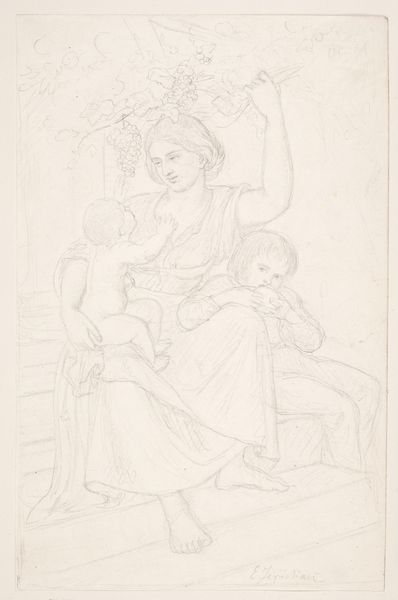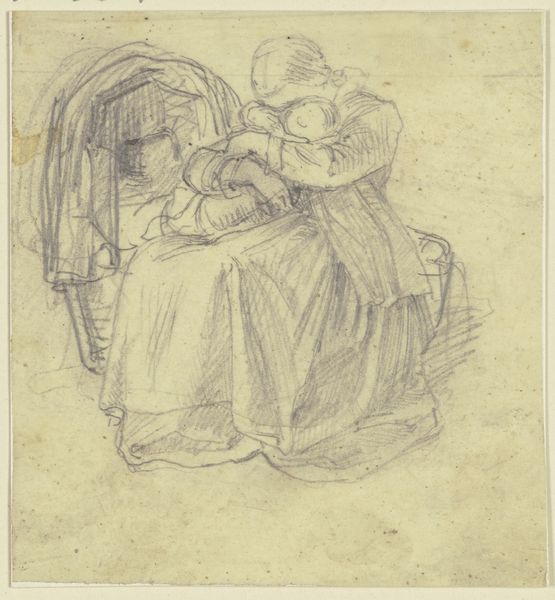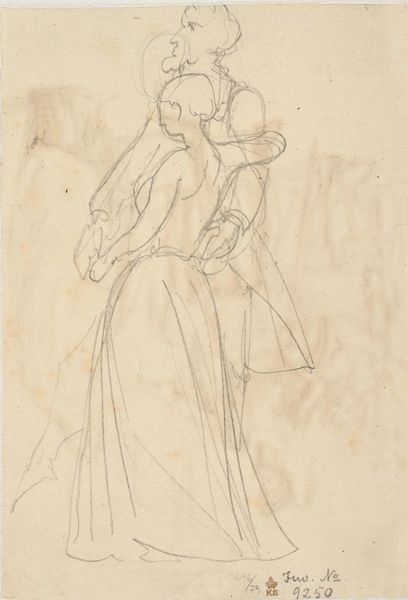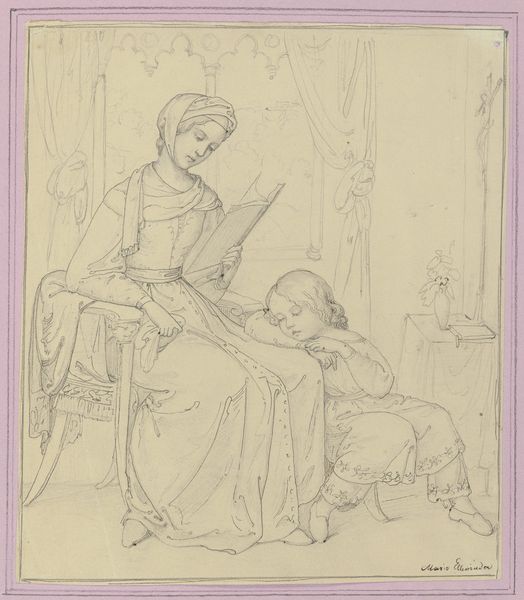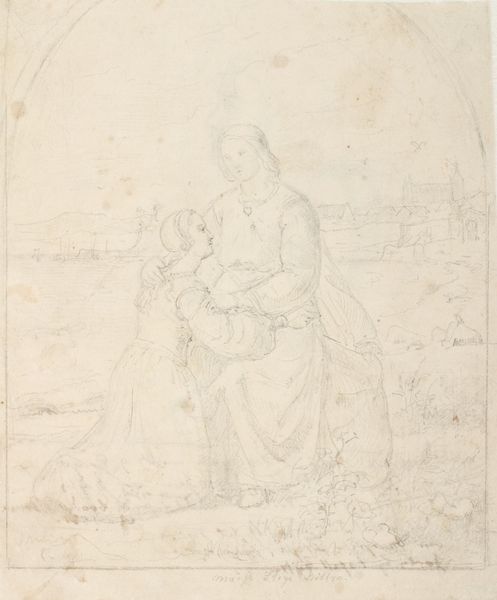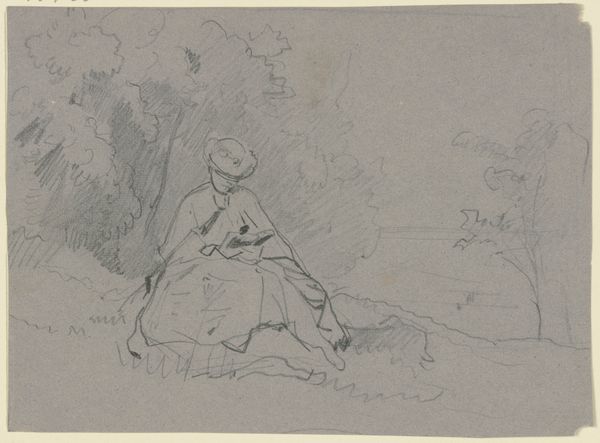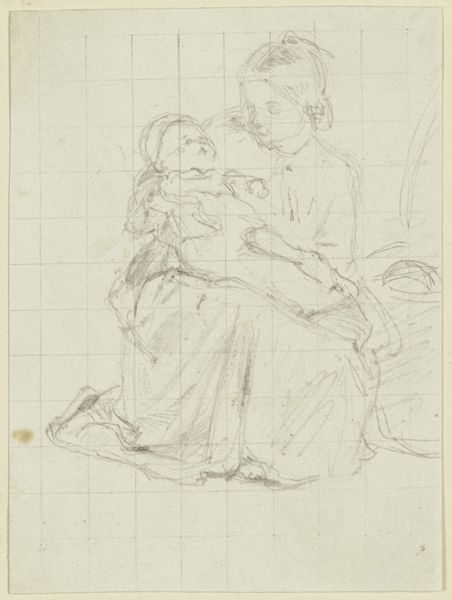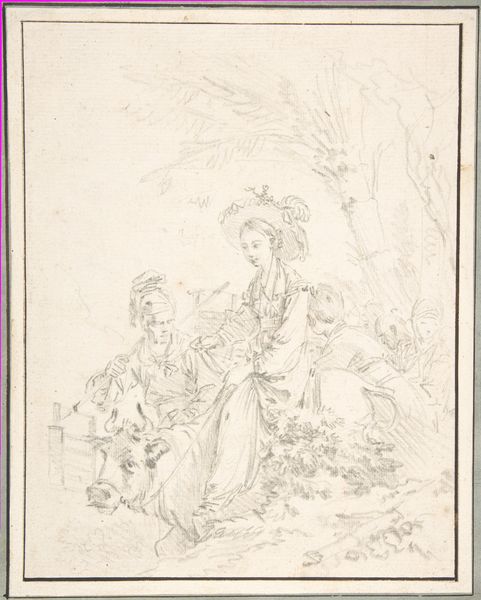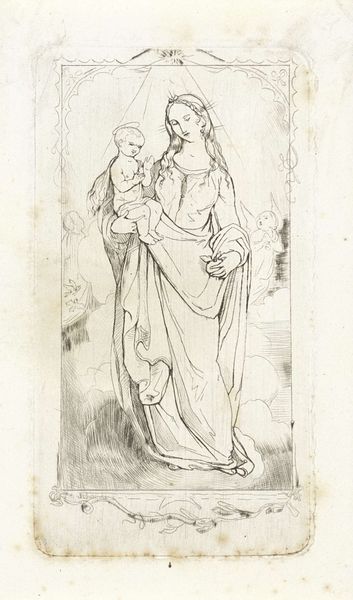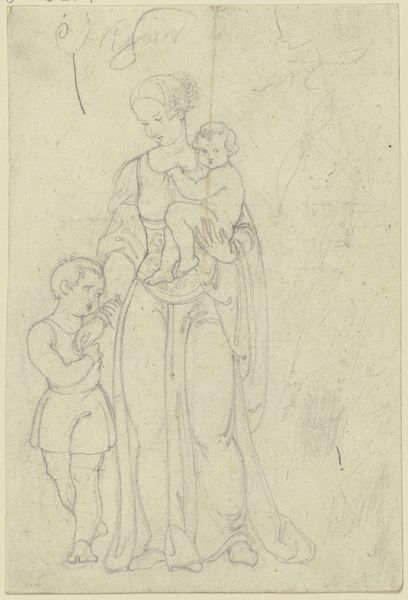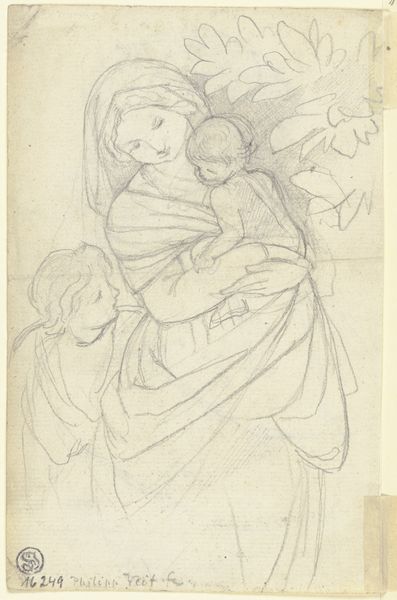
drawing, pencil
#
portrait
#
drawing
#
16_19th-century
#
narrative-art
#
sketchwork
#
romanticism
#
pencil
Copyright: Public Domain
Curator: Here we see Johann Baptist Kirner's drawing, "Maria auf einer Rasenbank, mit dem Jesuskind lesend," dating back to 1827. It’s a delicate pencil rendering currently held at the Städel Museum. The artist captured Mary sitting on a grassy bank with the Christ child reading. What strikes you initially? Editor: The softness of the pencil lends itself so well to this intimate depiction. The tenderness in Mary’s gaze, the small book held by Jesus - there's a gentleness in the whole scene that seems particularly vulnerable considering their historical context. It seems to highlight domesticity rather than divinity. Curator: I agree. Considering Kirner’s background, he focused on the everyday labor inherent in artistic production. It’s rendered with what looks to be graphite pencil, a medium that by the 19th century had become quite refined and widely available. Its mass production enabled broader artistic exploration, which makes a drawing like this incredibly accessible and intimate. Editor: Indeed, access is important. When we consider the politics of representation at this time, this piece almost seems to humanize Mary. Think of the pervasive and dominant idealized representations of women then, always subordinate. By situating her outside and educating Jesus in this humble environment, we begin to see the Madonna not as just an icon but as a human nurturer of the most valuable asset: intellect. Curator: The lines do highlight a Romanticized era that moves away from strictly academic work. If you consider Kirner's method, his pencil marks almost caress the paper, using precise, layered marks. Editor: And this very approach becomes part of a bigger, radical feminist history that pushes back against imposed roles and seeks instead for agency in domesticity and knowledge! Curator: Absolutely. From a materialist perspective, the relative ease with which such an image could be made and shared opened art-making and viewership to wider circles beyond the elite patronage systems. Editor: I am particularly captivated by how the light pencil evokes that intimate moment. In many ways, we are offered something quietly revolutionary: a mother, her child, and a book. Curator: So true, It is amazing how art-making materials have expanded both artistic practice and interpretation. Editor: It prompts me to think how such a tender drawing challenges hierarchical societal frameworks by simply prioritizing women's intellectual roles in shaping their communities! Curator: It definitely gives a modern viewer much to consider.
Comments
No comments
Be the first to comment and join the conversation on the ultimate creative platform.
